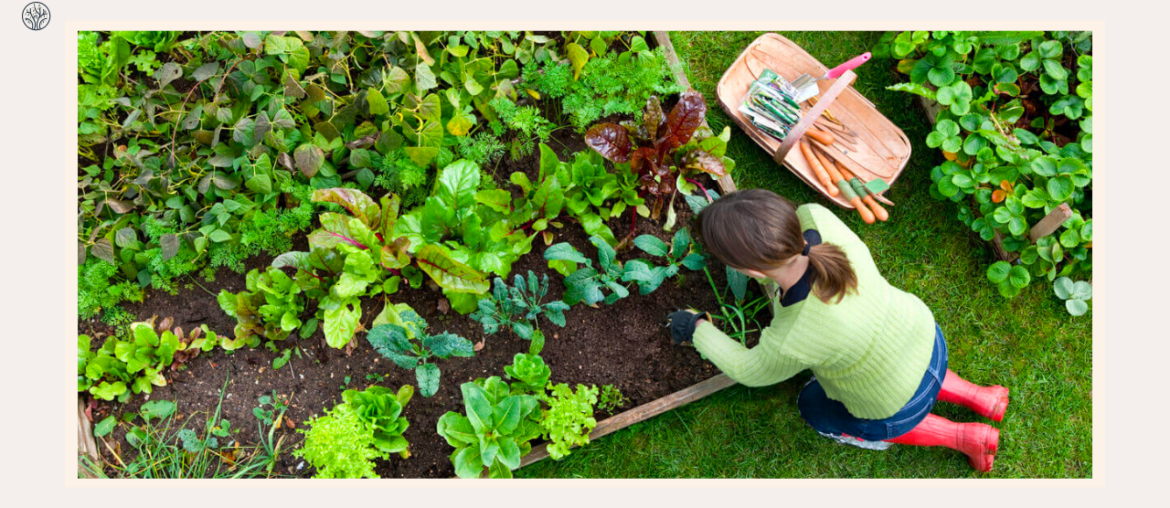Raised garden beds offer numerous advantages over traditional in-ground planting, making them worth the initial investment. However, due to the disadvantage of limited space, especially in urban contexts, there is not plenty of room to grow whatever we want. Therefore, to maximize the productivity of your garden, choosing the right vegetables for a raised bed garden is very important. That’s exactly what this article is about. Let’s explore the top 8 vegetables that are ideally suited for raised beds, as well as considerations and tips for a successful raised bed vegetable garden.
Choosing Vegetables for a Raised Bed Garden: What To Consider?
Before we delve into the top vegetables for a raised bed garden, it’s crucial to understand what factors to consider when planning your raised garden bed.
Type of Vegetables to Grow in A Raised Bed Garden
Not all vegetables require the specific growing conditions of a raised garden bed, but some can undoubtedly benefit from this setup. Among the most suitable vegetables are root vegetables.
Root vegetables, such as carrots, beets, and radishes, are perfect candidates for raised garden beds. The loose and friable soil in raised beds allows these crops to grow their roots without obstruction, resulting in healthier and more robust vegetables. The loose soil prevents compaction, making it easier for the roots to penetrate and grow without deformation.
Additionally, leafy greens like spinach, chard, arugula, kale, and lettuce also thrive in raised garden beds. These fast-growing greens can be planted together or interplanted with other vegetables. An added advantage of growing them in raised beds is the ease of harvesting their leaves early, alongside peas and other spring crops, followed by succession planting or replacement with other warm-weather crops.
Length of Growing Season
The length of your growing season plays a vital role in determining the vegetables you should cultivate. Raised beds offer the advantage of warming up earlier in the spring, extending your growing season. If you live in a northern climate with a relatively short growing season, you may face challenges in maturing long-season, heat-loving vegetables like melons and hot peppers. Raised beds can help these warm-season vegetables get off to a strong start by providing them with the warmth they need during the critical early growth stages.
What Vegetables NOT to Grow in a Raised Bed Garden
While the possibilities for raised bed gardening are virtually limitless, certain plants might present challenges due to their size and growing habits. Watermelons, pumpkins, and winter squash fall into this category, as their sprawling vines can overwhelm the limited space of a raised bed. However, as mentioned earlier, don’t rule out these delicious crops entirely. With the use of trellises or vertical gardening techniques, you can successfully grow these large plants in your raised bed, provided they have adequate support and room to spread their vines.
Top 8 Vegetables For a Raised Bed Garden
Carrots
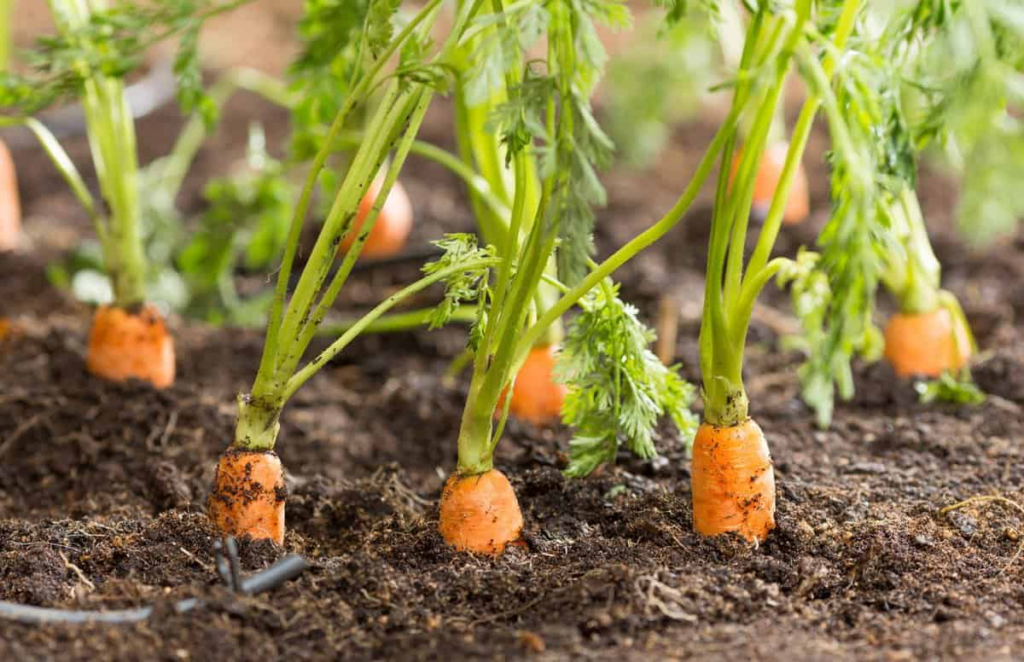
Carrots are a quintessential root vegetable that thrives in raised garden beds, especially due to their long roots. Their long, slender roots benefit a lot from the deep, loose soil that raised beds offer.
There are different solutions on how to build a raised garden bed, you can choose your carrot seeds accordingly. In raised beds with a depth of less than 8 inches, consider growing compact carrot varieties like Chantenay or Parisian, which have rounded roots. However, if your raised beds are deeper than 12 inches, go for long carrot varieties like Imperator.
To ensure straight growth, it’s crucial to plant carrots in stone-free soil, making raised beds the perfect solution. The loose, well-aerated soil prevents root forking and encourages healthy growth.
Plant carrot seeds about ¼ inch deep, and make sure not to wash away the tiny seeds while watering. Thin the carrots as they grow to provide ample space for each plant, and consider succession sowing throughout the season so the carrots are ready to harvest sooner.
Cucumbers
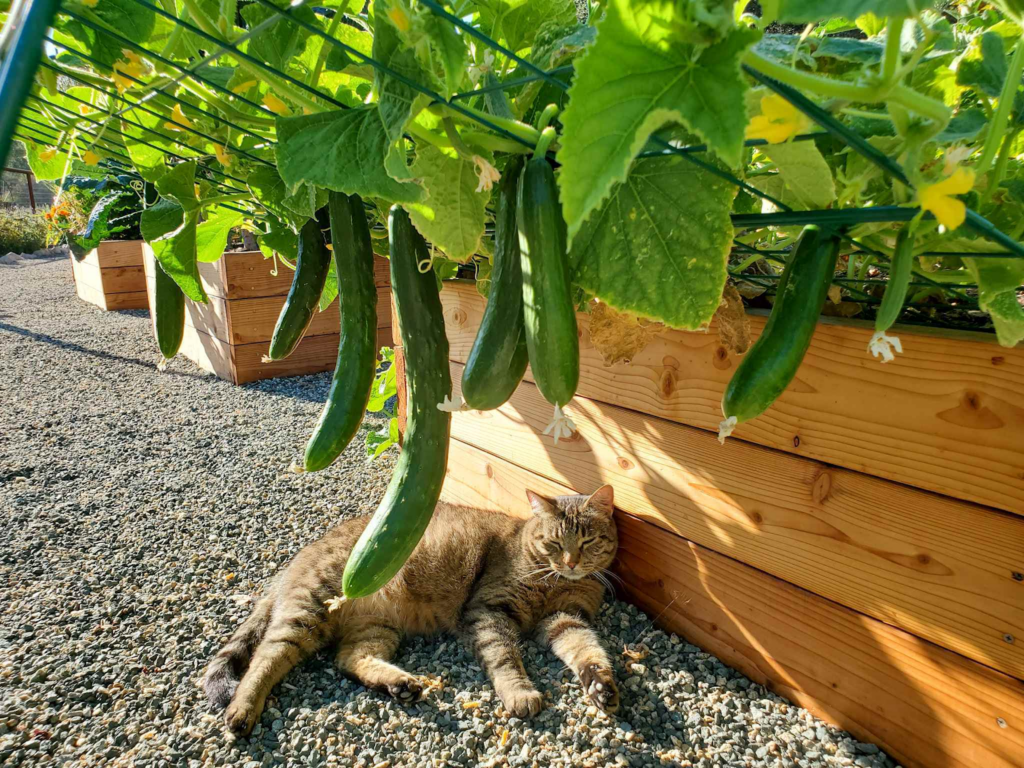
Cucumbers are a refreshing addition to any garden and are well-suited for raised beds, especially with their sensitivity to cold soil and air temperatures. Raised beds facilitate early soil warming, which is beneficial when planting cucumber seeds or seedlings.
There are two main types of cucumbers: bush and vining.
- Bush cucumbers, which grow just a couple of feet long, are an excellent choice for containers or raised beds. Supporting the bush cucumber plants on tomato cages or allowing them to tumble over the sides of a raised bed maximizes space utilization.
- Vining cucumbers, on the other hand, require a trellis for vertical growth. Planting them at the base of an A-frame trellis helps keep the vigorous plants from taking over the entire raised bed. Trellised plants also encounter fewer issues with insects and diseases, and the fruits become easier to spot and harvest.
Lettuce
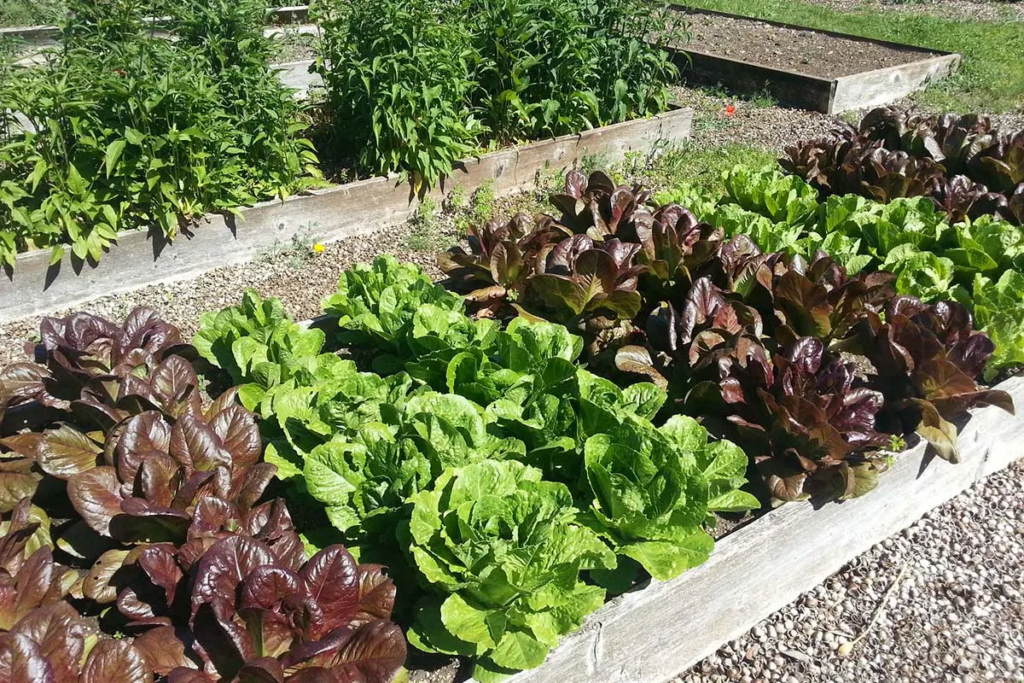
Lettuce is one of the very versatile and fast-growing vegetables to grow in a raised bed. As a cool-season crop, lettuce is ideal for early spring and fall plantings. The advantage of planting lettuce in a raised bed lies in its compatibility with larger plants like tomatoes and peppers. By the time the larger plants mature, you can harvest your lettuce, making efficient use of space.
For sowing lettuce seeds, sprinkle them in a thin line or small block and gently cover with soil. Water lightly to avoid washing away the tiny seeds. As the lettuce grows, thin out the plants by harvesting every other plant, ensuring healthier growth for the remaining ones. To enjoy fresh greens throughout the summer, continue sowing lettuce seeds every two weeks whenever there’s available space in your raised bed.
Peppers
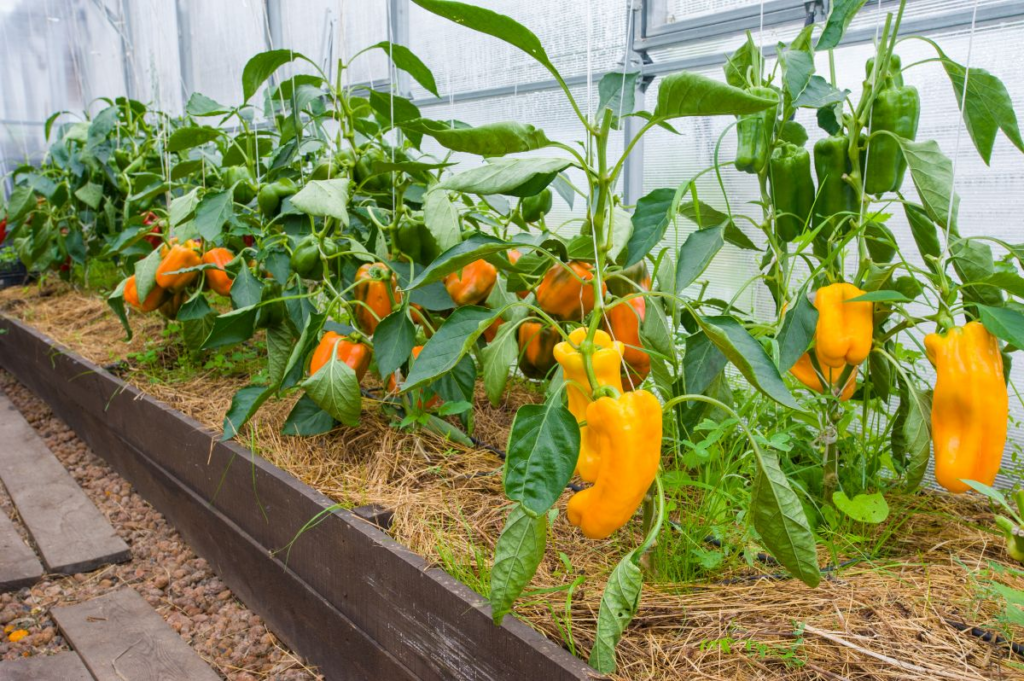
Peppers are a diverse group of vegetables with numerous varieties ranging from sweet to extremely hot. Growing peppers in raised beds is particularly advantageous, especially for those living in cooler climates. In zone 5 and similar regions, gardeners may find it challenging to grow peppers in traditional in-ground plantings. However, the well-draining and warm soil of raised beds significantly improves the success rate.
Peppers love sunlight and heat, making them ideal companions for tomatoes. Raised beds can be easily positioned in sunny spots to provide the perfect growing conditions for these sun-loving vegetables. Regular watering, without allowing the soil to become waterlogged, is crucial for healthy pepper growth. To enhance moisture retention and suppress weeds, mulching with straw or shredded leaves is recommended.
If starting peppers from seed, it’s best to begin indoors 8 to 10 weeks before the last frost date. While growing peppers from seed can be a bit finicky, using nursery-bought started plants eliminates this challenge. Once the danger of frost has passed, these started plants can be transplanted into the raised beds.
Spinach
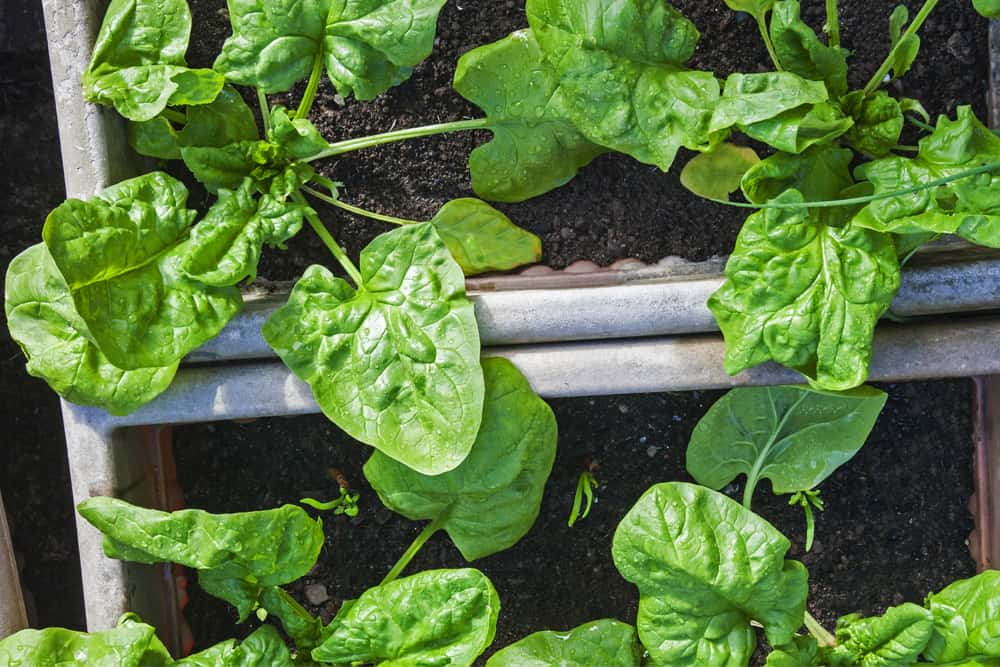
Spinach is a quick and easy-to-grow vegetable that provides a plethora of rewards. Rich in iron and various other nutrients, spinach makes an excellent addition to any diet. The best part about growing spinach in raised beds is its versatility. You can plant it alongside lettuce and radishes without any issues. However, it thrives best in cooler weather, so starting your spinach early is a good idea.
To sow spinach seeds, dig a small trench and sprinkle the seeds along it. Lightly cover with soil and water gently. Harvesting baby leaves instead of thinning allows the other plants to have enough space to grow. Sow new spinach seeds every month for a continuous supply until the first frost. Prevent bitterness by sowing in light shade during hot weather and keeping the ground moist.
Tomato
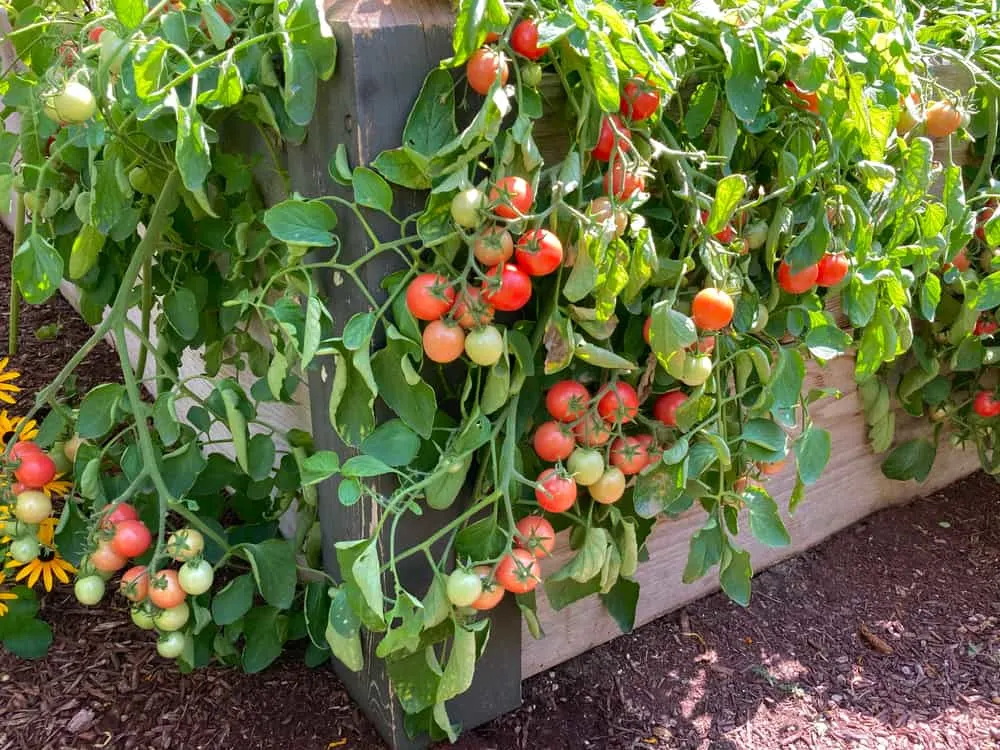
Tomato plants are a staple in many gardens due to their versatility and ease of growth. For small raised beds, opt for smaller tomato varieties like cherry tomatoes. Raised beds, especially in cooler regions, make growing tomatoes easier since the soil warms up faster.
With the deep, loose soil in raised beds, you can plant tomato seedlings deeply, promoting the development of adventitious roots along the stem. This enhances the plant’s ability to absorb water and nutrients, leading to healthier growth.
Note: Please remember that there are two types of tomatoes, namely determinate tomatoes and indeterminate tomatoes. Determinate varieties grow three to four feet tall, while indeterminate ones can reach seven feet or more. Consider using strong stakes or supports for indeterminate tomatoes and tie their new growth weekly.
Onion
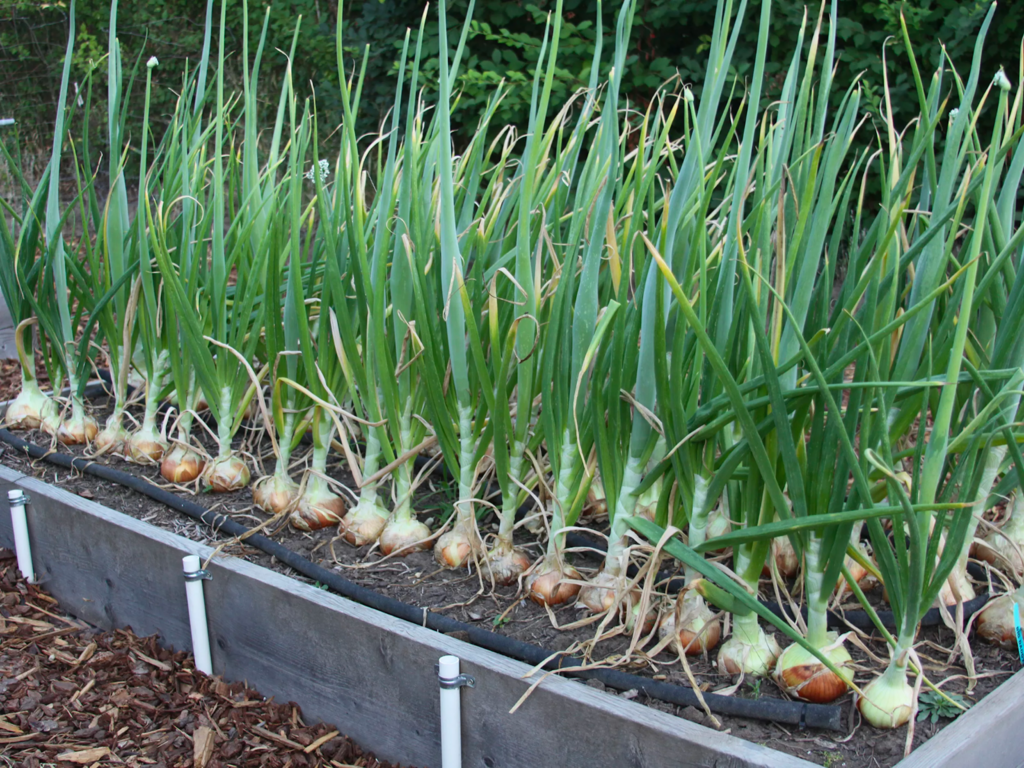
If space is limited in your raised bed vegetable garden, onions can be an ideal option to squeeze in between other vegetables. Onions are an excellent choice for raised beds because they detest compacted soil. Raised beds provide loose, well-draining soil that onions prefer, making them one of the best vegetables for this gardening method. Prepare the soil by enriching it with compost before planting onion sets or seedlings about 6 inches apart.
If you choose onions to grow in raised beds, keep them away from peas and beans, as these plants have different needs. Onions can be planted from onion sets in early spring or started from seeds indoors 8 to 10 weeks before the last frost date.
Onions act as natural pest deterrents for some vegetables, so consider planting them around kales, broccoli, cabbage, tomatoes, lettuce, and peppers. Their small size allows you to plant them in the spaces between larger plants or in a block or square foot section.
Peas
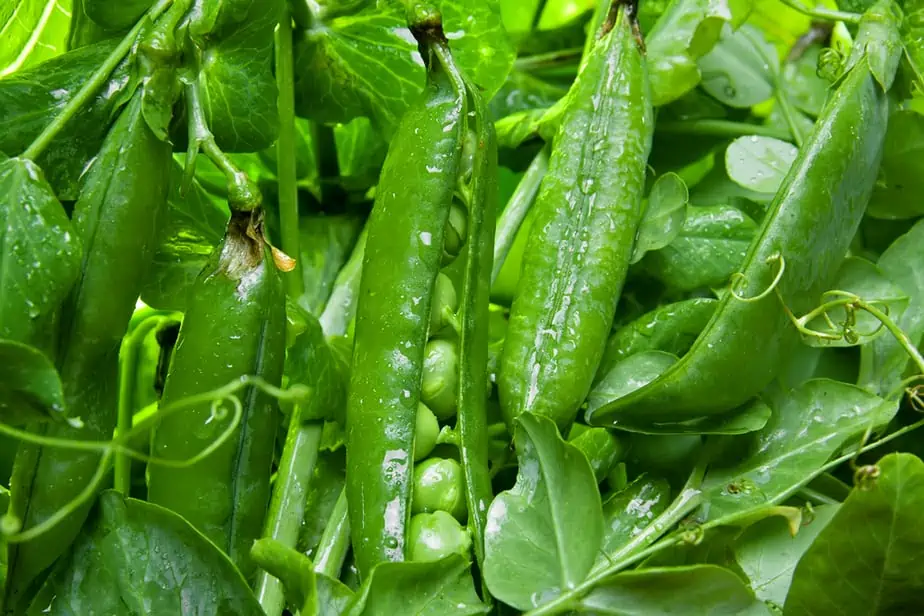
Peas are also one of the ideal vegetables for a raised bed garden due to their fast growth and quick yield. With some varieties producing in as little as 45 days, you can enjoy fresh peas in no time. Choose a dwarf variety if you lack a trellis, or allow the pea vines to trail over the sides of the raised bed for a picturesque effect.
To get an early start, direct sow pea seeds in early spring while the weather is still cool. Harvest them frequently to encourage continuous production. For better space utilization, train pea plants up a netting support installed along one side of the raised bed.
An essential tip for successful pea growth is to sow the seeds indoors in long ‘root trainer’ pots to protect them from mice. This method ensures less root disturbance, promoting healthier plants. Sow the seeds in March and expect a rewarding harvest from late June onwards.
Embrace These Vegetables for Your Raised Bed Garden!
Raised bed gardening empowers you to create an organic oasis where you can cultivate an abundant and diverse vegetable harvest. By selecting the right vegetables and alternating them with companion flowers that match the raised garden beds, you’ll be rewarded with fresh and nutritious produce throughout the growing season. So, get your hands dirty, invest in some raised beds, and embark on a journey of gardening joy and delicious homegrown delights. Happy gardening!

